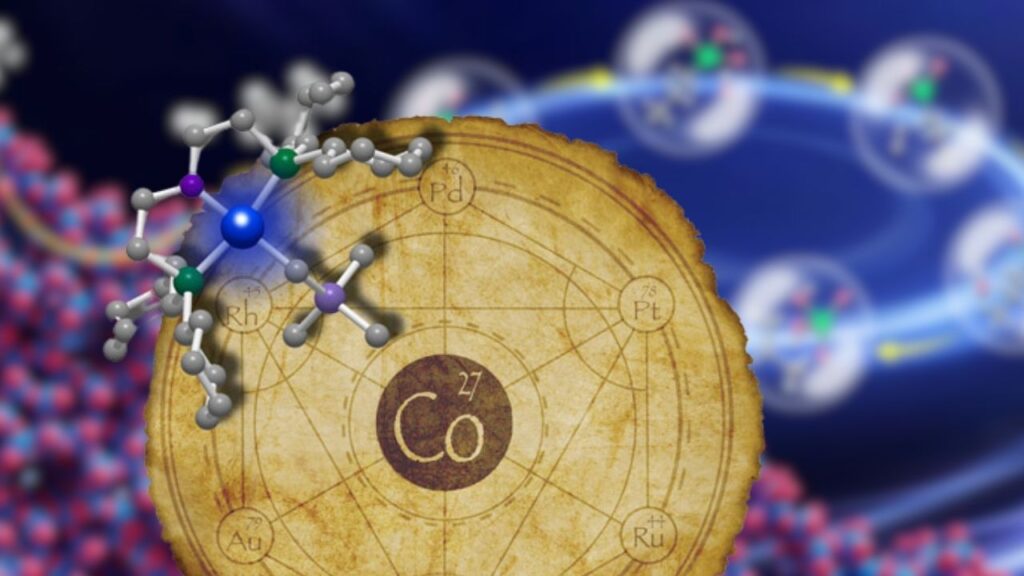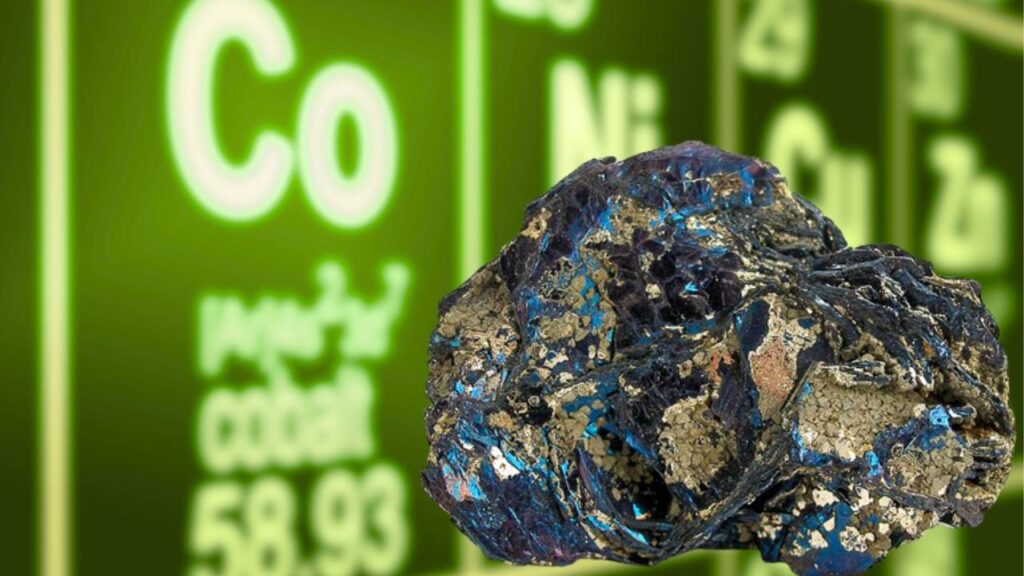Cobalt-Based Catalyst: Cobalt-based catalysts are rapidly emerging as a powerful and sustainable alternative to traditional precious metal catalysts. As the world seeks greener, more affordable solutions for industrial processes, energy production, and environmental protection, cobalt’s unique properties are capturing the attention of scientists, engineers, and industry leaders alike.

In this article, we’ll explore why cobalt is becoming a star in the world of catalysis, how it compares to precious metals, and what this means for the future of chemistry and manufacturing.
Cobalt-Based Catalyst
| Feature/Fact | Details |
|---|---|
| Main Advantage | Cobalt is abundant and much cheaper than precious metals like platinum, palladium, and rhodium. |
| Key Applications | Used in biofuel production, CO₂ reduction, drug synthesis, and fine chemical manufacturing. |
| Performance | With the right molecular design, cobalt catalysts can mimic or even surpass the performance of precious metals in some reactions. |
| Environmental Impact | Enables greener, more sustainable industrial processes by reducing reliance on rare, costly resources. |
| Professional Relevance | Chemists, chemical engineers, and sustainability experts are increasingly adopting cobalt-based solutions. |
| Official Reference | Los Alamos National Laboratory |
Cobalt-based catalysts are transforming the landscape of industrial chemistry. By offering a cost-effective, sustainable, and highly effective alternative to precious metals, cobalt is helping industries reduce costs, minimize environmental impact, and drive innovation. Whether you’re a student, a professional chemist, or just curious about the future of technology, cobalt’s rise in catalysis is a story worth following.
What Is a Catalyst and Why Does It Matter?
A catalyst is a substance that speeds up a chemical reaction without being used up itself. Imagine a chef who helps make a cake faster but doesn’t get eaten—catalysts are the “chefs” of chemistry! They’re essential in everything from making medicines and plastics to cleaning up pollution and producing clean energy.
Traditionally, the best catalysts have been made from precious metals like platinum, palladium, and rhodium. These metals are rare, expensive, and often mined in ways that can harm the environment. As demand for clean energy and sustainable manufacturing grows, finding alternatives is more important than ever.
Why Cobalt? The Science and the Story
Cobalt is a silvery-blue metal found in the Earth’s crust. It’s much more abundant than precious metals—about 10,000 times more common than rhodium or iridium. For decades, cobalt played a supporting role in batteries, magnets, and alloys. But recent breakthroughs have shown that, when designed correctly, cobalt can perform catalytic magic once reserved for its pricier cousins.

How Does Cobalt Work as a Catalyst?
Cobalt’s secret lies in its ability to form complex molecules that mimic the active sites of precious metals. When “captured” in the right molecular structure, cobalt can:
- Speed up chemical reactions efficiently
- Remain stable and reusable
- Work in a wide range of conditions (like different temperatures and solvents)
For example, scientists have developed cobalt complexes that can drive reactions used in making biofuels and reducing carbon dioxide—two crucial steps for a cleaner planet.
Cobalt vs. Precious Metals: A Side-by-Side Comparison
| Feature | Cobalt-Based Catalysts | Precious Metal Catalysts (Pt, Pd, Rh) |
|---|---|---|
| Cost | Low | Very High |
| Abundance | High | Low |
| Catalytic Performance | High (with right design) | Very High |
| Stability | Improving | Excellent |
| Environmental Impact | Lower mining impact | Higher mining impact |
| Industrial Use | Growing rapidly | Well-established |
Cobalt catalysts are not just cheaper—they’re also more sustainable, reducing the need for mining rare metals and lowering the environmental footprint of industrial chemistry.
Real-World Applications: Where Cobalt Catalysts Shine
1. Green Energy and Biofuels
Cobalt catalysts are being used to turn plant material into fuels and chemicals, helping reduce our reliance on fossil fuels. They’re also key players in splitting water to make hydrogen—a clean fuel of the future.
2. CO₂ Reduction
Transforming carbon dioxide into useful chemicals is a big step toward fighting climate change. Cobalt-based catalysts can help convert CO₂ into fuels or building blocks for plastics, making industrial processes more sustainable.
3. Pharmaceuticals and Fine Chemicals
Making medicines often requires precise, complex chemical reactions. Cobalt catalysts are now being used to create drug precursors more efficiently, sometimes replacing precious metals entirely. For example, new methods use cobalt to build important molecules for pharmaceuticals at room temperature, saving time, energy, and resources.
How Are Cobalt Catalysts Made and Improved?
Scientists have learned to “tune” cobalt catalysts by:
- Changing their molecular structure: Adding the right atoms or groups can make cobalt more active or selective.
- Supporting them on special materials: Placing cobalt on surfaces like titanium oxide can double its activity by exposing more of the metal to reactants.
- Designing for stability: New cobalt complexes are more robust, lasting longer in tough industrial conditions.
These innovations mean cobalt catalysts are now viable for large-scale use, not just in the lab.
Practical Advice: What Should Professionals Know?
- Cost Savings: Switching to cobalt can dramatically cut material costs in chemical manufacturing.
- Sustainability: Using earth-abundant metals supports corporate environmental goals and regulatory compliance.
- Performance: In many cases, cobalt matches or surpasses precious metals, especially when tailored for a specific reaction.
- Adoption: Leading chemical and pharmaceutical companies are already exploring cobalt-based processes. Staying informed can give your business or research a competitive edge.
New Quantum State Discovery Set to Revolutionize Material Science Worldwide
QuantumDiamonds Launches Diamond-Based Microscopy Tool for Semiconductor Failure Analysis
Quantum Algorithms Solve 40-Year Puzzle in Quasicrystal Structure
FAQs About Cobalt-Based Catalyst
Q: Is cobalt as effective as platinum or palladium?
A: With the right design, cobalt catalysts can be just as effective, especially for certain reactions like hydrogenation and CO₂ reduction. While precious metals still lead in some areas, cobalt is closing the gap fast.
Q: Are cobalt catalysts safe and sustainable?
A: Yes, cobalt is more abundant and generally less environmentally damaging to mine than precious metals. However, like all metals, it must be handled responsibly to avoid environmental harm.
Q: Where can I learn more about cobalt catalysts?
A: The official website of Los Alamos National Laboratory provides valuable information and updates on advanced catalyst research.
Q: What industries are adopting cobalt catalysts?
A: Energy, pharmaceuticals, fine chemicals, and environmental technology sectors are all exploring cobalt-based solutions for cost and sustainability reasons.
The Future: What’s Next for Cobalt Catalysts?
The journey of cobalt from a “supporting actor” to a “leading star” in catalysis is just beginning. As researchers continue to unlock new ways to design, support, and deploy cobalt catalysts, we can expect:
- Greater adoption in green energy and sustainable manufacturing
- More efficient, less polluting chemical processes
- A shift away from reliance on rare, expensive precious metals
This transition isn’t just good for business—it’s vital for building a cleaner, more sustainable future.






